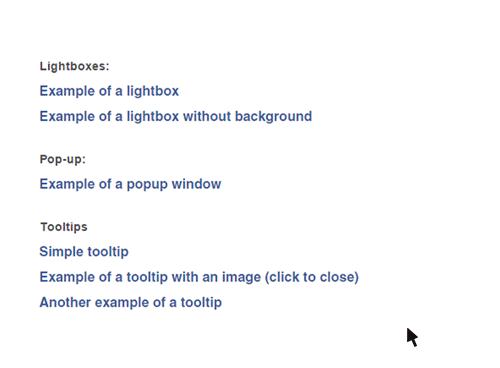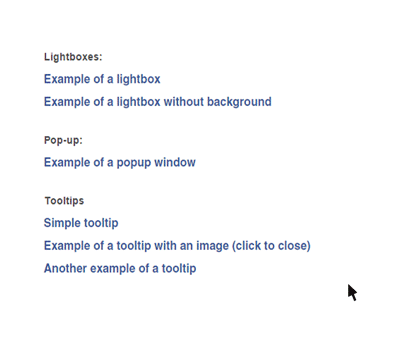
Creating richer learning environments is the fundamental driver for business success. Although many companies have adopted knowledge management strategies and facilitate collaboration via dedicated collaboration tools, contextual-sensitive help (CSP) is often overlooked.
CSP provides primary support option for many online wikis, manuals, content management systems and other forms of online documentation technology. It allows users to summon help while reading through manuals, help columns and other content. Usually, it takes the form of a command syntax where the user can type “?” at any place in the document and they will be able to find assistance specific to the content they are reading without having to leave the page.
What Is CSP?
Context-sensitive or contextual help provides very specific assistance at a point in a content item. CSP contains the smallest possible chunk of information the user needs to understand what they are reading or using at that point. Embedded help goes beyond basic information and explanations by either detecting a user's need for help or offering a guided tour right on the interface.
Thus, context-sensitive help provides immediate assistance to users without requiring them to leave the context in which they are working. It helps answer questions like "What is this?" and "Why would I use this?" and provides information for a particular content object and its context.
Why Do You Need Context-Sensitive Help?
As products incorporate increased functionality and multiple options, access to effective help becomes a barrier to adoption or a positive user experience. Customers face time constraints and easily become frustrated when clear answers to their problems prove elusive. Similarly, employee down time can be a major drag on productivity when employees have to troll through multiple documents looking for answers to a customer inquiry.
Benefits of Context-Sensitive Help
Context-Sensitive Help offers companies significant potential benefits, particularly in terms of productivity and enhanced user experience. The nine key benefits of incorporating CSP options into your content systems include:
- Cut down “invisible” costs associated with searching for information
- Help reduce client frustration
- Offer more than just help by incorporating valued added information
- Avoid multiple learning points and centralize important information
- Create richer learning environments
- Quickly add on valuable information as required
- Reduce ticket handling as clients can access relevant information enhanced by CSP
- Mobile availability so information can be accessed anytime, anywhere
- Increased productivity
How A Knowledge Base Facilitates Context Sensitive Help
Integrating CSP into an organization’s systems mainly heavily dependent on having access to a proper knowledge base for customers and employees. This is not just a question of having a repository to store documentation, but rather constructing a richer learning path and environment where anyone can rapidly obtain the information they require while also being able to add useful insights.
What Forms Does CSP Take?
There are five commonly used forms of CSP:
- Tooltips
- Lightboxes
- Mouseover
- Popups
- Brief Instructions and Explanations
Tooltips
A tooltip may be defined as, “a common graphical user interface element. It is used in conjunction with a cursor, usually a pointer. The user hovers the pointer over an item, without clicking it, and a tooltip may appear, a small "hover box" with information about the item being hovered over.”

- Tooltips present information about an element on the interface. Some aspects of tooltips to consider prior to its implementation include:
- Position tooltips in a way so that it doesn’t cover important areas of the interface
- Ensure it is clear where the tooltip is pointing
- Tooltips shouldn’t be intrusive or scattered all over the interface
- An elegant way to offer tooltips is by putting an easy-to-recognize icon such as a question mark next to the element they refer to
Lightboxes
You create a lightbox to provide a “learn more” or “what’s this” link, which takes users to a knowledge base displaying more information on the topic. This is useful when you need to communicate a lot of information to your customers but have limited space due to design constraints on the webpage, product interface or mobile application. Lightboxes provide users with more information via a contextual “what’s this” link.
Mouseover
A mouseover is generally defined as, “a mouse hover or hover box is a graphical control element that is activated when the user moves or "hovers" the pointer over its trigger area, usually with a mouse, but also possible using a digital pen.”
When integrating mouseovers into your CSP, be selective as Mouseovers can sometimes confuse users as they appear without clicking and disappear without closing them.
Popups
A pop-up can be defined as, “a window that comes up on top of another window on a computer screen”. Popups present information about an element on the display interface and are an effective alternative to displaying your application's online Help system in a separate window. Configuring the pop-up to be user initiated makes them far less jarring and annoying to users than system-initiated pop-ups.
Brief Instructions and Explanations
Short instructions and explanations overlaid on the interface can be very useful. They instantly explain what is expected of users, avoiding the need for users to guess. Brief instructions are very helpful when showing the required content and format required for form fields. Keep instructions as short and concise as possible.
Three Golden Rules for Effective CSP
Providing effective help mechanisms is one of the factors that shapes the overall user experience. In choosing what form of CSP to adopt in your situation, consider these three guiding principals:
- Available: Some CSP tools should be available in every application or website, but it should remain unobtrusive until users need it. And when they do, it should be simple to activate.
- Plain language: Help messages should be succinct and written simple to understand plain language
- Unobtrusive: It should be easy for users to return to their original task after seeking help.
Conclusion
CSP enhances knowledge usage and information performance by using contextual tools to create onsite help and task-based assistance. User experience is a valuable driver in identifying key success touch points or areas of content complexity. Deployed effectively, context sensitive help promotes client satisfaction and increases team productivity.

























